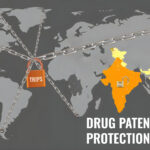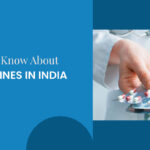Following Independence, Indian Telecommunication (phones) was entirely in the hands of the Indian Government. If you were born before the economic liberalisation of the 1990s, you might remember how difficult it was to acquire a phone line. The government was the sole provider, and it focused mostly on urban areas. Its quality was dubious, as phone calls constantly dropped. The bureaucracy was slow and corrupt in making decisions and had absolutely no incentive to improve their quality. With the liberalisation of 1990 came Airtel, Reliance, Vodafone, and Idea which forced the government to revamp their telecom provider. This is what has resulted in India having some of the lowest rates for telecommunication across the world, and it is what happening with Pradhan Mantri Bhartiya Jan Aushadhi Kendra and SayaCare.
Like telecoms, the generic drug market has been largely untapped until the government made the push. Whereas in the older days, money was the constraint – PM Jan Aushadhi had the crucial component necessary to sell generic medicine. It built trust among people about generic medicines. However, like telecoms similar issues arose in Jan Aushadhi; quality was dubious, no accountability, lethargy in fixing issues, and corruption could be ever-present with the lack of accountability. It lacks the vigour and whim to compete and improve its services, and that’s where SayaCare came into play.
Table of Contents
Transparency
SayaCare builds upon the Pradhan Mantri Bhartiya Jan Aushadhi Kendra concept of double testing but improves it with various crucial aspects. The first and foremost is transparency. In a country plagued with corruption, any lack of transparency or accountability can result in individuals taking advantage.
There are few things less transparent than medicine. One purchases a salt composition, known to them as a brand name, and trusts that the medicine they purchase is the composition that is required. Unscrupulous individuals could make faulty medicine, put less of it in order to save on costs or not put anything at all. Even with the government assuring quality – the bureaucrats in charge are nebulous and everchanging. All it takes is one unscrupulous individual in order for the medicine you receive to be faulty.
We at SayaCare have changed this through the introduction of transparent double testing. Any individual can see the quality of our drug tested at a third-party laboratory. That laboratory is under 7 different regulators (CDCSO, State Regulatory Authority, NABL, UCS, FSSAI, DCGI, State Food Regulatory Authority) who are constantly probing and questioning whether they are doing the correct job – if anything nefarious is to occur, they would have to outsmart 7 different regulators and their customers (us). Additionally, their entire business is based upon their reputation, should their results be tampered with, and this knowledge be made publicly available, their customers could no longer rely on them which would decimate their business.
Accessibility
Generic Medicine is a quantity game – with prices so low it requires that bulk be sold in order for the seller to make a profit. This naturally means that areas of high population will be more profitable for sellers of generic medicine than rural areas. The selling of medicine as an e-pharmacy makes location irrelevant for this game. This ensures that rural individuals also receive quality medicine at an affordable price. Additionally, it allows those who have difficulty commuting to acquire medicines.
Quality
Pradhan Mantri Bhartiya Jan Aushadhi Kendra follows the L1 system of tendering. The L1 system is where the lowest bid is accepted, and the lowest bidders have to provide the medicines at that price. This results in the lowest acceptable quality being produced. If an active ingredient with a drug has to be between 90%-110% of the stated quantity – the L1 system will ensure that competition for the tender drives the manufacturers to make at the 90th percentile in order to recoup costs. SayaCare does not take the lowest bid, we always purchase from suppliers who produce quality products as opposed to those who make the cheapest. By repeatedly testing, we have built up a database of manufacturers and their quality that we use to determine who has the highest quality medicine at the most affordable price. This means that while SayaCare will not be cheaper than the government, it will definitely be of higher quality.
Consistency
While most government agencies follow a sampling approach in terms of testing, the sampling is often poorly designed and is not enough to ensure quality 100% of the time. Sampling involves picking out certain drugs from the list of drugs to be tested in a completely random manner. The manner that is chosen in India is not random, and it picks up only certain categories of drugs. Testing of life-saving medicine is something that should not be sampled, it should be consistent and repeated across every batch. That is what SayaCare does by consistently double-testing each and every batch that passes through it.
Adaptability
Drug manufacturing costs are completely dependent on the prices of their Active Pharmaceutical Ingredients (APIs), and the various other chemicals required to manufacture the medicine. Prices for these can go up or down depending on trade relations (70% of APIs come from China), climate, and other uncontrollable world events. One should treat these as commodities as opposed to any manufactured product. This means that with the lengthy tendering time, the government is incapable of quickly reacting to increases in the price of the API. The government would send several notices to the company, which will then have the added pressure of either breaking their purchase contract or producing the medicines at a substantial loss. We at SayaCare can easily shift to another supplier should their preferred cost rise, and if all prices rise – we can also increase the prices of the medicines. It is better to raise the price of an essential drug, rather than make it unavailable for some unattainable cost of production. See cost comparison between SayaCare and branded medicines.
Brand Dilution
Now that SayaCare has withdrawn from the Jan Aushadhi ePharmacy market. Jan Aushadhi medicine is for the most part only available at Pradhan Mantri Bhartiya Jan Aushadhi Kendra. These Kendras dot the country, although a small percentage of those that are registered as visible are actually functioning on a regular basis. Those that are functioning, have generally realised that Jan Aushadhi medicines are not a profitable or consistent source of income. Frequent shortages due to the lack of adaptability of the government make consistent customers concerned about availability. The low prices for customers also provide low income for the Kendra owners.
The functioning PM Jan Aushadhi Kendras have for the most part shifted to procuring medicines from third parties. While there are concerns about the quality checks of Jan Aushadhi Medicine, it does have more oversight than a standard generic drug. These oversights are completely useless if these centres do not sell Jan Aushadhi medicine which is what the majority of Jan Aushadhi Kendras across India are doing. We at SayaCare alleviate this challenge by ensuring that all medicines only come through our highly secure web application.
Ease of Use
One of the largest challenges in medicine is knowing what generic substitute one can take in place of a particular brand. SayaCare absolutely obliterates this challenge with its one-of-a-kind converter. SayaCare is able to create linear combinations of available drugs in lieu of any given branded drug while keeping in mind subtleties regarding dissolution profile, tablet type, and vitamins in mind.
Variety
A common complaint of Pradhan Mantri Bhartiya Jan Aushadhi Kendra is that it does not have available the drug the customer requests, or it has certain combinations of drugs that are not readily prescribed in the market. Indeed, it frequently appears that some combinations of Jan Aushadhi that were made available were done so with little thought or regard for what is asked for in the market. For example, Amlodipine 5 mg + Ramipril 5 mg is available, which is rare if ever asked for, but Telmisartan 40 mg + Metoprolol (ER) 50 mg cannot be found. SayaCare alleviates this issue by utilising the prescription and conversion data that it stores in determining the appropriate drug codes. SayaCare watches conversion requests and chooses its drugs accordingly; carefully mimicking what the market requires and discarding the remainder.
Availability
As discussed earlier, generic medicine is a quantities game. Most generic shops will only keep that which is readily sold due to the fear of discarding unsold medicine due to quality. Pradhan Mantri Bhartiya Jan Aushadhi Kendras work the same way; it is impossible to get a refund on unsold medicine. That means rare medicines, ones that are rarely used but often the most crucial, often cannot be found in medical shops. We at SayaCare alleviate this issue by offering medicines through the means of an ePharmacy.
Quality Assured Supply-Chain
PM Janaushadhi centres have an extremely long supply chain which goes from the manufacturer -> central warehouse -> regional warehouse -> distributor -> retailer. The longer the supply chain the more wastage and more potential of medicine to be kept in unsafe conditions. Medicine needs to be stored at room temperature with low humidity, which in India is a tall task. At SayaCare medicine comes directly from the manufacturer to our temperature/humidity-controlled environment before being sent out for orders.
According to several quality control experts, the most damaging thing for medicine is to be kept in an unsafe environment for months at a time. Think about it, how many times have you gone to a pharmacy which lacked air-conditioning? Do they keep their AC on at night, to ensure their medicine does not spoil from the heat? Do they have a dehumidifier in case of torrential downpours? All these things are assured at SayaCare.
Quick Turn-Around Time
Due to the shortened supply chain, SayaCare uses medicine within 3 months of it being tested. Due to unpredictability in demand, this number can shift, but not by much. This ensures two things:
- Reduced wastage. Keeping medicine for a long time often results in a lot being wasted due to expiry. Planning for only three months of storage ensures that even if it takes twice as long to sell it does not expire.
- Little chance of over-ageing. Testing a sample ensures quality as of the moment it is tested. But what about a year or two later? The batch degrades with time, perhaps in an unsafe environment. Perhaps the manufacturer did not put enough over the ageing ingredient, and the medicine expired earlier than it should have. This problem is avoided by testing and using the medicine as quickly as possible.
Reaction Time
Suppose some product at Pradhan Mantri Bhartiya Jan Aushadhi Kendra is of good quality, but the packaging is absolutely atrocious. The tablet slips out the strip easily such that every second strip is damaged. By the time the medicine reaches the consumer, it will have to flow back so many chains to get back to the manufacturer for repackaging. But for a similar scenario for SayaCare, we can immediately recall all batches of that medicine, and send it back for repackaging. There is no lengthy supply chain, and customers who received the badly packaged medicine can all be alerted as all the data has been stored. This ability of quick recall and recast is a miracle compared to the otherwise non-existent drug recalls in India. SayaCare can quickly react to any instance of quality malfeasance, while a government organisation might actually get to it by the time of the medicine’s expiry.
SayaCare is the first, but probably not the last entrant into the burgeoning field of privately Double-Tested Generic Medicine. Our vision is to ensure that all medicine in India is double-tested before being sold so that people get only quality medicine. The cost of testing is nothing in comparison to the traditional cost of marketing expensive branded medicine, and its benefits are easily felt across the populace. Never should an individual be concerned by either the quality or price of medicine; human health comes first.
Dr. Dhruv Gupta stands as a distinguished medical professional renowned for his expertise, particularly in [specific medical field]. His significant contributions extend into the forefront of healthcare innovation, where he has emerged as a pioneering advocate for e-pharmacy solutions. Dr. Gupta’s visionary leadership in integrating technology and pharmaceutical services has reshaped the landscape of healthcare delivery. As a proactive participant in the telemedicine realm, he has demonstrated a commitment to enhancing patient care and accessibility to medications through digital platforms. Beyond his clinical practice, Dr. Gupta is actively engaged in medical education, often sharing his insights as a speaker at conferences. His patient-centric approach ensures that individuals benefit from convenient and reliable access to necessary medications, marking him as a key figure at the intersection of healthcare and technology.





